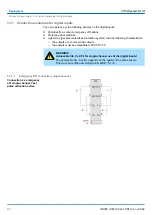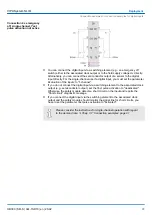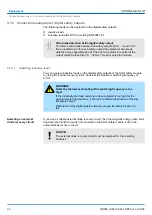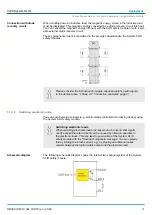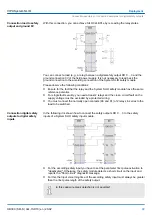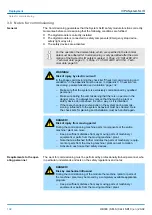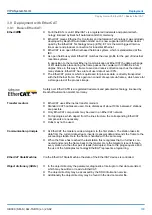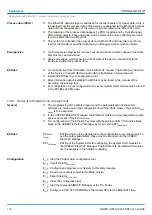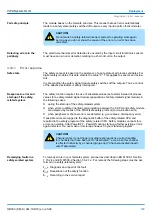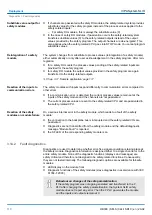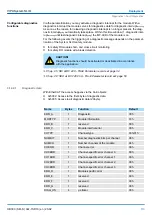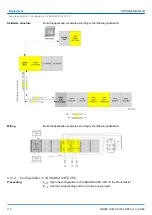
9.
Connect the IO
‘SLIO EtherCAT System’
to your PROFINET system and define the
areas for input and output. More details can be found in the corresponding manual
for your CPU.
10.
Start the
SPEED7 EtherCAT Manager
.
11.
Import the ESI
FSoE master
.
12.
Place the FSoE master as the 1. EtherCAT slave system.
13.
For the EtherCAT network with all I/O modules as 2. EtherCAT slave system, place
the VIPA FSoE slave.
14.
Parametrize the I/O modules and adapt the address mapping if necessary.
15.
Close the
SPEED7 EtherCAT Manager
and transfer your project to the master
CPU.
3.9.3 Parametrization System SLIO safety module
The System SLIO safety modules must only be placed in the
SPEED7 EtherCAT Man-
ager
. The parametrization of the System SLIO safety modules takes place in the configu-
ration tool of the FSoE master and is to be exported as ESI
FSoE master
. By importing the
ESI
FSoE master
into the
SPEED7 EtherCAT Manager
, the FSoE master can be integrated
into EtherCAT as a slave system.
3.9.4 Generate safety program
As soon as you change a parameter of a System SLIO safety module in
the hardware configuration, you must validate it with the configuration tool
of the FSoE master, transfer the new configuration and import the new
ESI
FSoE master
into the SPEED7 EtherCAT Manager. Then you have to
refresh the hardware configuration in your master CPU.
3.9.5 Diagnostic messages EtherCAT
Code
Description
0x01
FSoE telegram error: unexpected command
0x02
FSoE telegram error: unknown command
0x03
FSoE telegram error: invalid connection ID
0x04
FSoE telegram error: CRC error
0x05
FSoE communication error: Watchdog expired
0x06
FSoE telegram error: Invalid FSoE slave address
0x07
FSoE telegram error: Invalid safe data
0x81 - 0x96
Internal error
n
ERR LED: 5x blinking
VIPA System SLIO
Deployment
Deployment with EtherCAT > Diagnostic messages EtherCAT
HB300 | SM-S | 02x-1SD10 | en | 20-02
105


